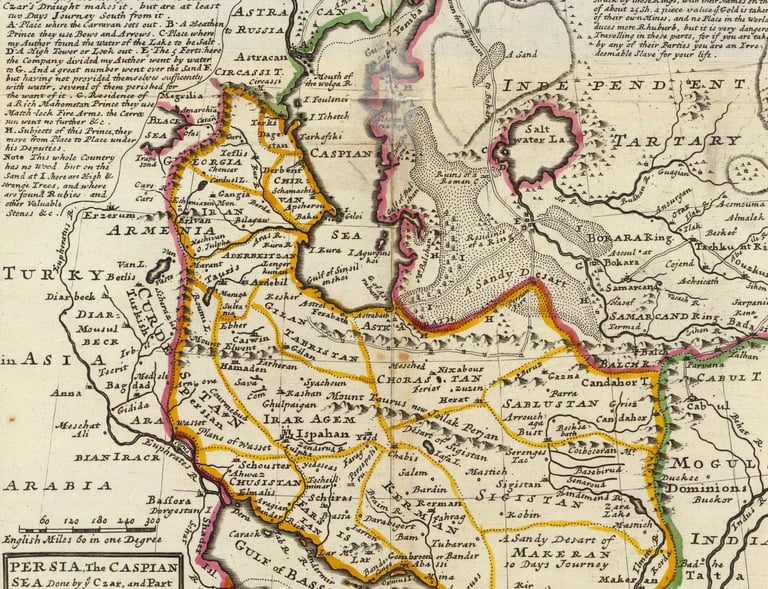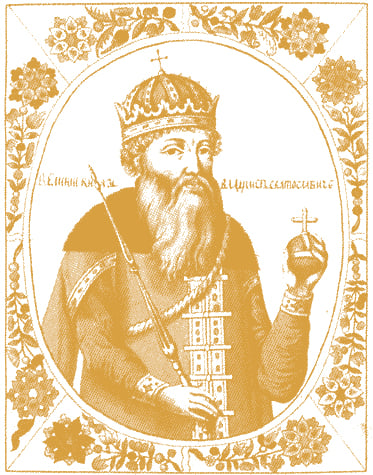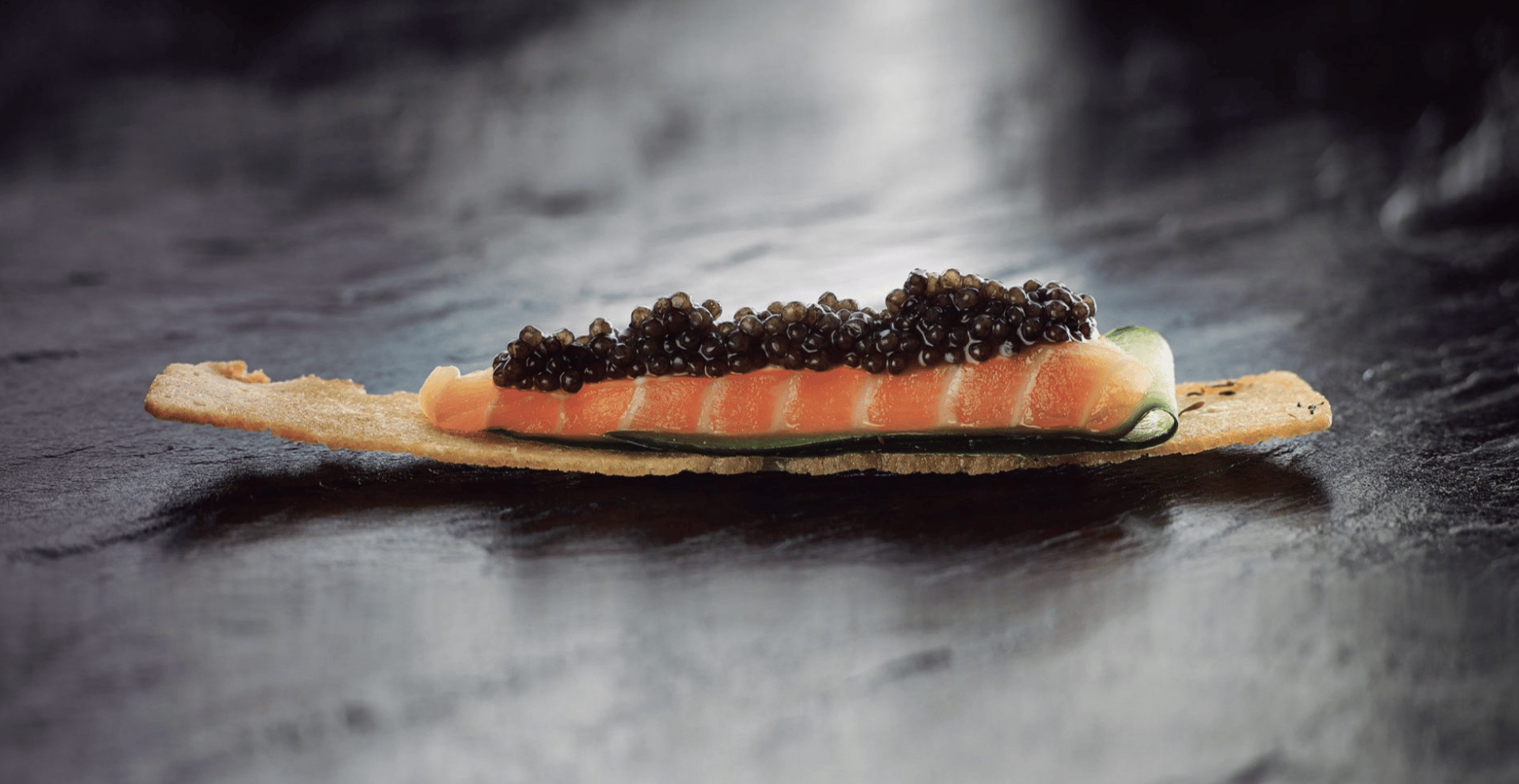
STORY OF AN ANCIENT DELICACY
The fascination for the mythical sturgeon has its roots in the mists of times: Persians, Carthaginians, Greeks and Romans knew about it; great ancient philosophers mentioned it in their writings.
This fish has been on the face of the Earth for 250 million years, and the roe produced by the female sturgeon continues to be the raw material of a precious treasure: caviar.
But the map leading to that treasure has changed, and it is no longer limited to the waters where Asia and Europe blend together. Today, also in Uruguay, in the southern part of the world in an absolutely natural environment, sturgeons are bred and some of the finest caviar is produced.
The Story of Caviar


The Caspian, the Black and the Azov seas, the birthplaces of its history, were a true crossroads of cultures: Persians, Arabs, Mongols, Asians, Russians and Europeans came together in that vast area where silk, gold, spices, jewels and salt were traded.
It is impossible to determine who prepared the very first caviar in history. Just as unclear is the origin of the word, an English term that might come from the Italian word caviale, the Tartarian word khavia or Turkish word khavyar. And the Turks, some linguists claim, could have borrowed that word from the Greeks, whom already had an age-old tradition of salt-cured fish roe.
Birth Places


Although the Persians are generally credited with being the pioneers of caviar production and consumption, it was the Russians, at the end of the 10th century and during the reign of Prince Vladimir of Kiev, who were the first to develop the art of caviar as we understand it in modern times. And besides any historical discussion, no one disputes that this delicacy became a true cultural icon of Russia.
Russia




The earliest recorded reference to caviar in the modern sense of the word comes from the writings of Batu Khan. It happened around 1240, when the grandson of the legendary Genghis Khan, who had come from invading and ravaging Russia with the Mongol army, visited a monastery in Uglich. He and his wife Yildiz were honored by the monks with a great banquet. Hot apples topped with a tablespoon of salted sturgeon roe were served for dessert. The delicacy was not to her liking, but the dreaded visitor was delighted. He liked it so much that the monastery of the Russian Orthodox Church was granted a safe conduct and remained standing.
Batu Khan


Caviar became known in Europe only around the 14th century, when Venetian merchants ventured into the Black Sea and brought it back in their ships, filling large barrels with those fragile black eggs. However, it took a long time to be accepted: two centuries later, Shakespeare referred to caviar as a metaphor for obscurity and the incomprehensible. And until well into the 19th century, European fishermen continued to discard sturgeon roe, throwing it to animals or dumping it on the banks of rivers.
Shakespeare


In the flavorsome history of caviar there is also a small chapter reserved for Louis XIV, the Sun King. During a reception held at Versailles, Tsar Peter the Great sent a sample of caviar to the Palace through the Russian ambassador. Legend has it that the French monarch, disgusted after trying it, spat it immediately on the ground, provoking a diplomatic incident. But history evened matters up: a few centuries later, Paris would fall for the charms of caviar.
Louis XV

When the Russian Revolution that dethroned the Tsars broke out in 1917, and the following year the First World War ended in Europe, Louis XIV had been buried for about 200 years, nobody remembered his act of insolence and Paris was getting ready to dance to the rhythm of the Roaring Twenties. In the 1920s Ville Lumière, caviar was all that was missing in the those parties enlivened by the Charleston beat, champagne and refugee aristocrats.
Paris

# What is Caviar?
Caviar is the salt-cured roe (eggs) of sturgeon.Even though the word caviar is commonly used to refer to the salt-cured eggs from other fish (salmon, paddlefish, etc) that is NOT caviar. True caviar can only come from one of the 27 species of sturgeon belonging to the Acipenseridae family as stated in the Codex Alimentarius (FAO).
# How should I serve my Caviar?
Ideally, serve your caviar directly from its original tin. Place the tin on a bed of crushed ice and open it only when you are about to serve. Once the vacuum-sealed tin is opened, try and reduce air exposure to a minimum, placing the lid over the caviar in between servings. It is best to use spoons made from mother-of-pearl, bone, wood or plastic. Avoid silver or metal spoons as they can react with the caviar giving it a metallic off-flavor and altering your caviar tasting experience.
# How much should I serve?
It depends on whether you are tasting caviar by itself or serving it as topping on a recipe. Our recommended serving is 30 grams (1 oz) per person if you are tasting it by itself or 15 grams (0.5 oz) if you are serving it as topping.
# What should I eat with my Caviar?
We produce a high-quality caviar and therefore we recommend to enjoy Polanco on its own in order to appreciate the complexity and subtleties of its flavor.
However, if the occasion calls for a more elaborated recipe here you have some ingredients that go along very well with Polanco:
Traditional. Blinis and crème fraiche topped with a dollop of caviar.
Potatoes. Caviar pairs perfectly with all types of potatoes preparations. Baked, mashed, grilled, fried, you name it!
Eggs. Boiled, scrambled or poached. There are a dozen different ways to cook an egg and guess what! All of them go perfectly with a touch of Polanco.
As a rule of thumb, high quality caviar like Polanco is best paired with subtle ingredients in order not to distract our taste buds and allowing them to perceive Polanco’s full flavor as it develops in your mouth.
# What should I drink with my Caviar?
Traditionally, caviar is paired with Champagne, sparkling wine or ice-cold vodka. Dry white wines or sake are also common matches for this ancient delicacy. But don’t be afraid to trail off the beaten track and find your perfect pairing for Polanco caviar.
# How should I store my Caviar?
Caviar is a fresh, highly perishable product and needs to be stored properly in order not to lose its properties. Always keep your Polanco tin in the coldest part of your refrigerator which is normally close to the cold air vent. Never in the freezer! Ideal storage temperature is between -4 and +4 °C (25 – 39 ° F). Polanco is packed in vacumm-sealed tins and kept under the right temperature it can last up to 3 months (check label for “best before” date) in your refrigerator. Once opened you should finish the tin within 48 hs.
# What does Malossol mean?
“Malossol” is Russian for “little salt.” Back in the day, salt was the main method for preserving goods so the sturgeon roes were heavily salted. Nowadays, thanks to cold storage solutions throughout the international supply chain we can adjust our salting recipes to the very minimum allowing the true protagonist of this product, the eggs, to show its full potential.
